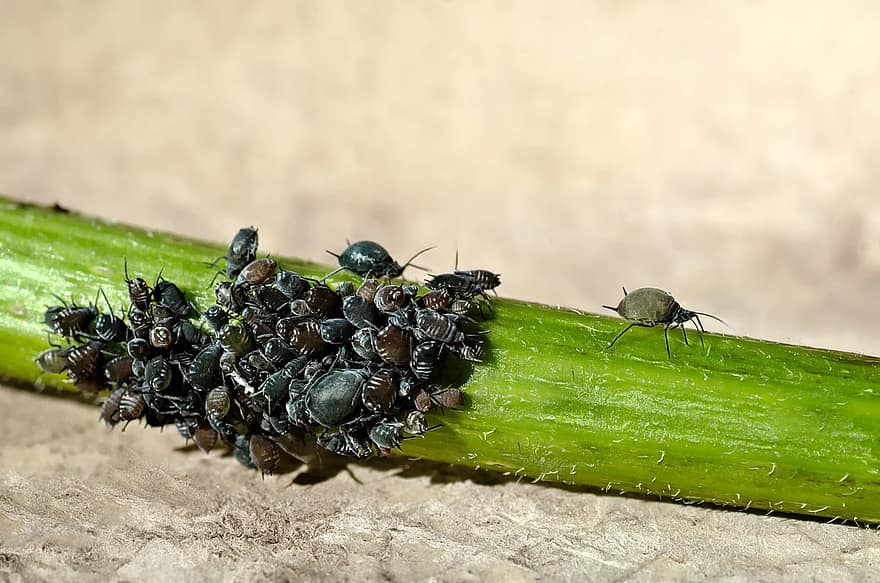If you’re a proud owner of any type of greenhouse for commercial or personal purposes, you’d want to know how to keep small bugs out of your greenhouse. Greens aficionados who recently started their greenhouse gardening journey are concerned about the various types of insects that happen to get in and out of their greenhouses. While some of them are harmlessly searching for plants to pollinate, others simply want to gobble them up.
To make sure that your tender plants are protected from destructive bugs that can potentially throw all of your gardening efforts out the window, you need to keep a few things in mind.

Tips for Keeping Your Greenhouse Free from Destructive Bugs
Fortunately, you can do certain things to help keep those destructive garden bugs at bay. You can get started by following these tips:
Tip #1: Keep your greenhouse clean
It doesn’t matter if you have a mini greenhouse, a commercial greenhouse, or a semipro greenhouse – you need to make sure that it stays clean. In case you’re not aware, weeds that grow inside the enclosed space, as well as outside of it, can attract disease-causing bugs that include spider mites, thrips, aphids, and whiteflies.
Tip #2: Identify your enemy
Although it can be challenging to properly identify the destructive bugs that you’re dealing with, you can’t avoid it. This may require professional help because different types of pests require different types of interventions. In other words, there’s no one-size-fits-all remedy for pest infestations.
Tip #3: Plant the right kind of grasses and perennials outside the greenhouse perimeter
You can keep the thrips from getting inside your greenhouse if you plant fine fescues and other types of grasses that have narrow blades around your greenhouse’s the outside perimeter. It’s also a great idea to plant some ornamental perennials or broadleaf weeds near your greenhouse because of these act as reservoirs for destructive thrips.
Tip #4: Turn the thermostat to 90˚ before you close your empty greenhouse down for the season
Did you know that thrips can survive in an empty or frozen greenhouse for an extended period of time? During those cold winter months, these bugs stay perfectly fine as they cling onto weeds and all kinds of debris while they wait for the temperatures to rise. To prevent them from staying inside your empty greenhouse, try turning the thermostat to about 90˚F for around 50 to 10 days before you decide to close it down for the season.
Tip #5: Place sacrificial marigolds inside your empty greenhouse
After you let your empty greenhouse cook for ten days, you can choose to place several sacrificial marigolds in your greenhouse to attract the thirsty and hungry thrips. Give the bugs a few days to migrate onto the flowers before you pull the thrips-infested blooms out.
Tip #6: Get rid of stagnant pools of water
Shore flies may start in small numbers, but once they find their way inside your hobby greenhouse, they can multiply quickly. It’s important to note that these bugs need algae to survive. Unless you’re willing to sacrifice the leaves of your tender plants to these insects, be sure to get rid of any stagnant pool of water on your greenhouse floors in order to prevent the growth of algae.
Tip #7: Remove your sentimental plants that attract bugs
Did you know that certain plants harbor populations of thrips, spider mites, aphids, or scales? Some of these plants include hibiscus, Mandevilla, or “Ponderosa” lemon. Remember that these shouldn’t be anywhere inside your production greenhouse.
Tip #8: Introduce bugs that are good for your plants
It’s best to plan regular introductions of certain beneficial insects that include spider mite predators, praying mantis, mealybug destroyers, lady beetles, fly predators, bumblebees, beneficial nematodes, aphid predators, green lacewings, fungus gnat predators, thrips predator, and more. You can do this while you coordinate the schedule for seasonal planting, as well as crop production. As you prepare for the introduction of the good bugs, make sure that you use bio-rational pesticides instead of those that produce lengthy residual effects.
Tip #9: Water your plants properly
Light watering that’s done frequently won’t cause your plants to thrive because it triggers excess moisture levels, as well as the development of shallow roots. Without proper watering, your plants can become vulnerable to drain flies, shore flies, and fungus gnats.
Tip #10: Avoid excessive nutrient fertilization
Thrips and aphid infestations tend to worsen with excess nutrient fertilization because these bugs will have more to feed on when your plants exhibit growth and plenty of extra nitrogen.
Should You Get Yourself a Mini Greenhouse?
Yes! While regular, full-sized greenhouses are great, growing your tender plant babies in a mini greenhouse is even better. Since these miniature greenhouses don’t take up much space, they’re perfect for greens aficionados who have limited living spaces and those who have no backyard space for a garden.
Since these types of greenhouses are extremely mobile, you can easily move them from one spot to another so that your plants can get more sunlight or shade. What’s more, mini-greenhouses are also great for newbie greenhouse gardening enthusiasts. Aside from the fact that they’re very easy to manage, mini-greenhouses are also excellent for starting seeds.
Thoughts on How to Keep Small Bugs Out of Your Greenhouse
The importance of learning how to keep small bugs out of your greenhouse is something that every gardening enthusiast needs to understand. Applying the tips that were listed above should help you keep your plants healthy and bug-free.
